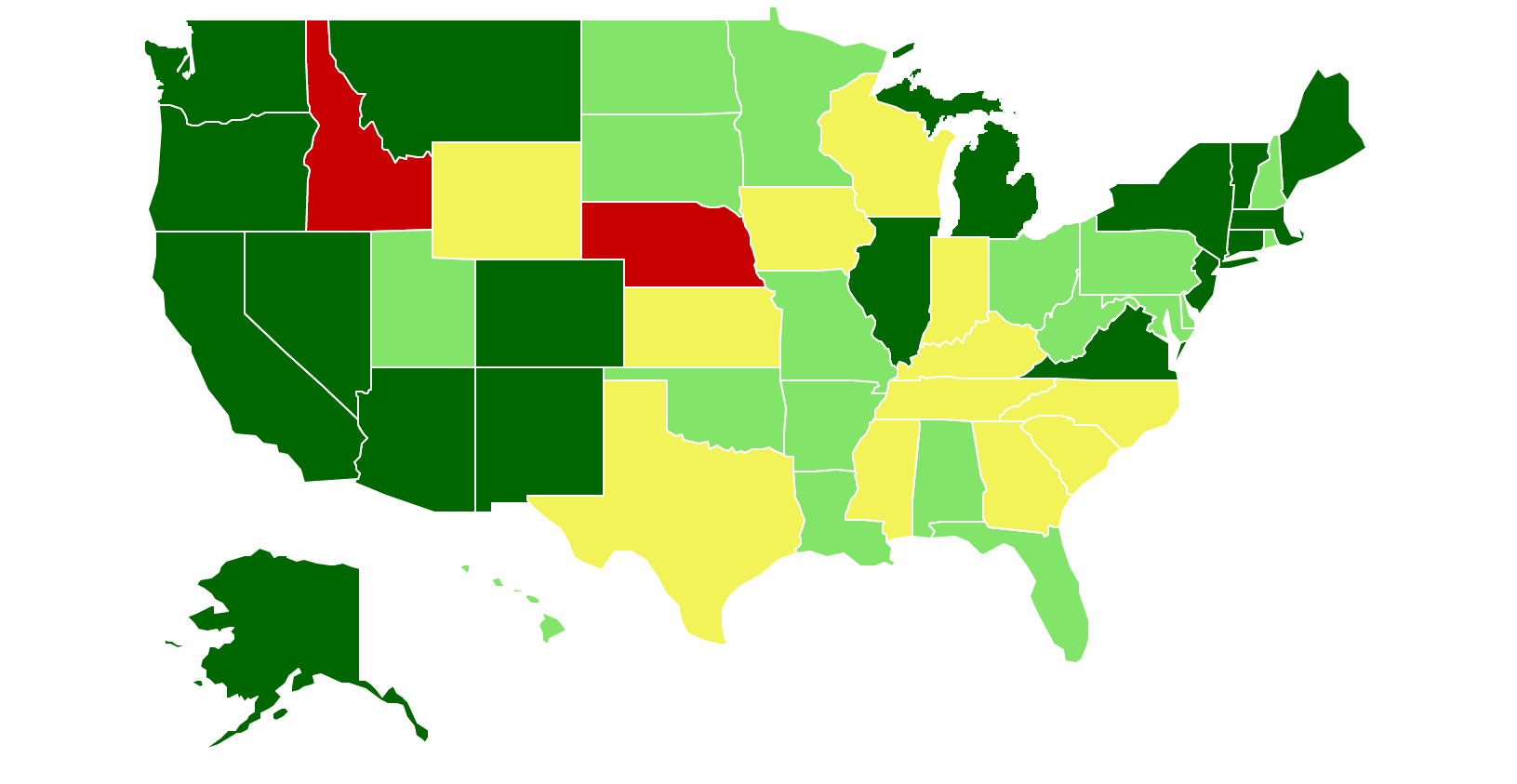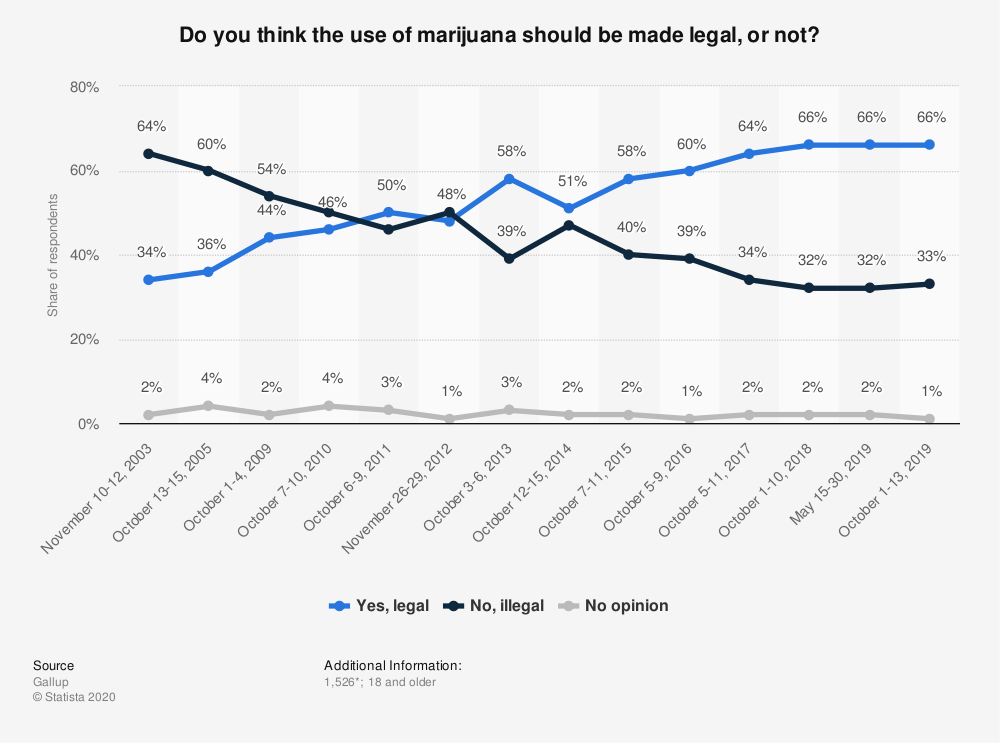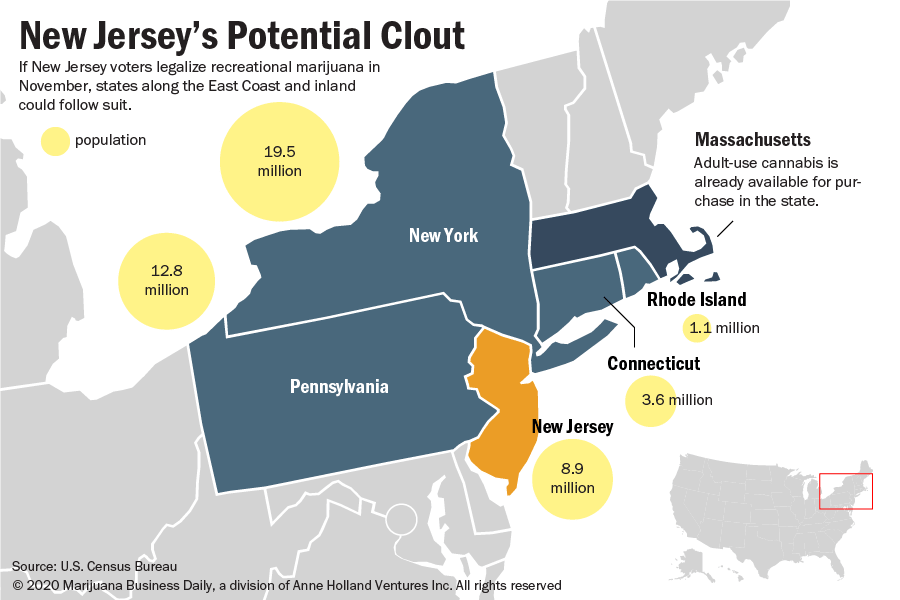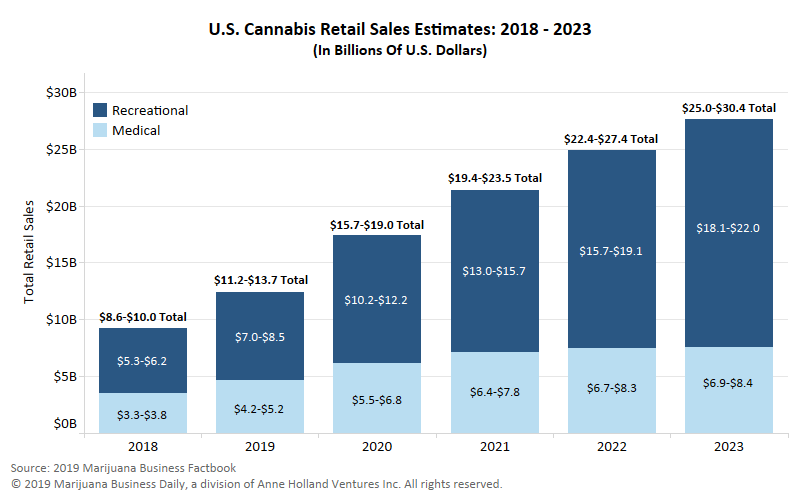The Emerging Cannabis Industry
Support for marijuana legalization continues to rise.
The passage for legalization in the most recent elections in New Jersey, Arizona, Montana, South Dakota and Mississippi fundamentally reshapes the status of cannabis in the U.S. by marking, for the first time, that more Americans live in states with legal adult-use access than in states where cannabis remains completely prohibited. Since then, four additional states, Virginia, New York, New Mexico and Connecticut, have passed legislation to legalize recreational use.
Legal Medical & Recreational Marijuana States

Since 2012, Eighteen (18) states and Washington, DC, have legalized recreational-use marijuana for adults over the age of 21.
Thirty-Seven (37) states and Washington, DC have legalized medical marijuana.
Marijuana Investment on the Rise
Marijuana companies raised $116.8 billion in capital in 2019, according to cannabis industry research firm Viridian Capital Advisors. We can expect this trend to continue, but important to the U.S. industry is also banking reform. Big banks are currently afraid of money laundering charges they may face if they work with these businesses. Besides the difficulty of getting capital, this means tremendous risks and inconvenience for companies operating in cash. The American Bankers' Association has been pushing for more legal clarity and bridging of the gap between federal and state law, and we could see banks warm up to cannabis if bills like the SAFE Banking Act are passed.
The cannabis industry in the US is proliferating. It is currently a $20.1 billion-dollar industry on its way to $41.5 billion within five years. The results of a survey, conducted from 2003 to 2019, among adult Americans on the legalization of marijuana in the United States reports that in October 2019, 66 percent of respondents replied in favor of legalizing marijuana, while only 33 percent were against it. This is further evidence of the likely proliferation of cannabis legalization across the US.
SOURCE: New Frontier Data, 2020
In 2016, the US election resulted in a "green wave" as cannabis legalization measures passed in eight out of nine states. Now, the industry and its supporters are hoping the mandate on election day 2020 will serve as a huge opportunity for industry growth. Legalization supporters believe the seven successful ballot initiatives could have a domino effect on other states -- especially in the mid-Atlantic states and the states looking to address budgetary and social justice issues. This hypothesis is proving to be true since 4 additional states have legalized recreational marijuana since the election in November.
Legislative Reform - Major Opportunities for the Cannabis Industry
- The MORE (Marijuana Opportunity Reinvestment and Expungement) Act, which would remove marijuana from the list of federally controlled substances has passed the House and is awaiting a vote in the Senate.
- The SAFE (Secure And Fair Enforcement) Banking Act, which passed the full House last year before stalling in a key Senate committee.
- The States Reform Act.
By delisting cannabis as a Schedule I drug, the States Reform Act would free states to pursue their own policies regarding cannabis. If the citizens of a state would want to legalize it for medical or recreational use, they would be free to do so without the concerns that exist today with regard to running afoul of federal law. It would also make it easier for businesses to operate in states that have legalized uses for cannabis by eliminating many of the problems those businesses face in securing key financial services from banks.
- The repeal of 280E. Tax code that prohibits business deductions for cannabis entities.
- The STATES Act (Strengthening the Tenth Amendment Through Entrusting States).
- The Marijuana Freedom and Opportunity Act, a de-scheduling measure.
- The U.S. Food and Drug Administration’s policies on marijuana and hemp.
Emerging Markets - The "Green Wave"
On the heels of New Jersey, New York and Connecticut legalizing adult-use marijuana, the next likeliest states to legalize adult-use in 2021, include New York, Pennsylvania, and Rhode Island. The largest mid-atlantic states are now preparing for the retail sales of recreational marijuana. For weed businesses, this means shifting their attention from the West to the East Coast as opportunities emerge in untapped markets.
New Jersey approval, and now New York and Connecticut, is expected to cause a domino effect along the Eastern Seaboard and inland, creating an adult-use marijuana region that is among the biggest in the world.
The population of five states Pennsylvania, Connecticut and Rhode Island (see graphic above) - that have been discussing adult-use legalization, totals 37 million, more than quadruple the number of people who reside in New Jersey alone.
When New York begins sales of legalized adult-use marijuana, it will be the single largest recreational market in the country. This will translate to big dividends for the businesses who capture even a small part of that market first.
According to Arcview Market Research and its research partner BDS Analytics, over the next 10 years, the legal cannabis industry will see much progress around the globe. Spending on legal cannabis worldwide is expected to hit $57 billion by 2027. The adult-use (recreational) market will cover 67% of the spending; medical marijuana will take up the remaining 33%.



